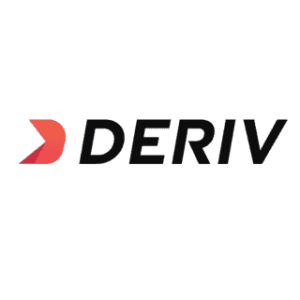If you notice warning signs like fake regulation, hidden fees, or aggressive deposit demands, your broker may be a scam. Here’s a compassionate, step-by-step guide to help you spot the red flags and safeguard your funds.
The Dark Side of Forex and CFD Trading
Imagine you’re ready to dive into forex trading after mastering the demo account. You deposit your hard-earned money with a broker promising “lightning-fast trades” and “expert support.” Weeks later, your account balance mysteriously drops, customer service is unresponsive, and your withdrawal requests vanish. Unfortunately, this scenario is all too common in the world of forex and CFD trading scams.
Recent data shows that thousands of complaints are lodged each year with regulatory bodies about fraudulent brokers. The good news is, by recognizing the red flags early, you can protect yourself and avoid being a victim.
Red Flag 1: Lack of Proper Regulation
A major warning sign is when a broker claims to be “regulated” without listing verifiable license numbers or specifics. Vague references to non-existent agencies can be a clear indicator of fraud.
- Watch Out For:
- Missing license numbers on the website
- References to agencies like “Global Financial Authority” that do not exist
Example:
Alex signed up with a broker called “EliteFX” that boasted FCA regulation. When he tried withdrawing profits, his account was frozen. Later, he discovered that their “FCA license” was fake, they were registered in an offshore haven known for lax oversight. Alex lost $12,000 before he realized the deception.
Action Steps:
- Verify the broker’s license using the FCA Register
- Avoid brokers operating from high-risk jurisdictions such as St. Vincent, Vanuatu, or Mauritius
Red Flag 2: Inconsistent or Vague Disclosure
If a broker’s fee structure is unclear or the terms are buried in jargon-heavy text, take caution. Disclosures that sound too good to be true or are intentionally vague are common tactics used by scam brokers.
- Key Points to Notice:
- Promises like “Spreads start at 0.0 pips” but hidden commissions elsewhere
- Terms and Conditions that are confusing and overly technical
How to Outsmart Them:
- Demand a clear fee breakdown by emailing support with a simple request such as, “Can you provide a full schedule of fees?”
- Compare their stated spreads and commissions to reputable brokers like Pepperstone or IG (read reviews)
Red Flag 3: Unrealistic Promises of Guaranteed Returns
Legitimate brokers understand that trading involves risk. Promises of guaranteed high returns are a hallmark of scams.
- What to Watch For:
- Claims such as “Earn 30% monthly with our AI robot—guaranteed!”
- Advertisements that promise zero risk and 100% profits
Real-Life Caution:
In 2024, a broker called “QuantumTrades” enticed thousands with claims that their algorithm “never loses.” Traders poured in millions only for the platform to vanish overnight, leaving investors high and dry.
Reality Check:
No credible broker can guarantee profits. If it sounds too perfect, it likely is.
Red Flag 4: Poor or Non-Existent Customer Support
Reliable customer support is essential. If you’re met with silence when you need help, it might be a sign that your broker isn’t legitimate.
- Red Flags Include:
- Long response times or no response at all
- Inconsistent or automated replies without addressing your concerns
For Example:
Maria tested customer support at three brokers. Two left her unanswered, while a trusted broker like FOREX.com responded within 90 seconds. This immediate feedback was crucial in her decision-making process.
Tip:
Test support by asking specific questions about account features or trading conditions. Genuine brokers will respond quickly and accurately.
Red Flag 5: Unusually High Leverage Offers
While high leverage might seem tempting, brokers offering extremely high ratios are often operating in unregulated spaces.
- Warning Signs:
- Leverage offers like 1000:1 when regulated brokers typically cap at around 30:1
- Promises of “double your profits with minimal margin” that disregard the inherent risks
Consider This:
With a $1,000 account using 1000:1 leverage, a market move of just 0.1% against you could wipe out your entire balance. This is a recipe for disaster.
Your Safety Net:
Stick to brokers that comply with regulatory leverage limits (e.g., ESMA or FCA guidelines).
Red Flag 6: Hidden Fees and Charges
Hidden costs can slowly drain your account without you noticing.
- Common Hidden Charges:
- Excessive inactivity fees or withdrawal fees that aren’t clearly disclosed
- Additional commissions that are buried in the fine print
How to Protect Yourself:
- Read the fee schedule thoroughly before committing.
- Ask for a detailed breakdown of all fees in writing.
Comparison Snapshot:
- Legit Broker: Spread around 0.8 pips, no commission or low fees
- Scam Broker: Spread as low as 0.2 pips but charges high commissions and inactivity fees
Red Flag 7: No Segregation of Client Funds
Your money should be kept separate from the broker’s operational funds. If it isn’t, your funds are at risk if the broker runs into financial trouble.
- Key Red Flag:
- Phrases like “Client funds may be used for operational costs” signal potential commingling of funds.
- No mention of investor protection schemes, such as the UK’s FSCS.
Real-World Alert:
James nearly lost his entire deposit with a broker that refused to confirm whether client funds were held in segregated accounts. His cautious inquiry saved him from joining a sinking ship.
Your Action Plan:
Ask directly: “Are client funds kept in segregated accounts at a Tier 1 bank?” Verify this with reputable banks like Barclays or Deutsche Bank (click to go).
Red Flag 8: Negative Reviews and Scam Reports
A quick online search should reveal what other traders are saying. Consistent negative feedback is a strong indicator that you should steer clear.
- What to Do:
- Search for “[Broker Name] scam” on Google.
- Check forums like Forex Peace Army or subreddits like r/Forex for firsthand accounts.
Survivor Tip:
Lena avoided a scam broker after reading reviews about extended withdrawal delays. Instead, she chose a broker with consistently positive feedback, ensuring peace of mind.
Red Flag 9: Poor Website Design and Lack of Transparency
A broker’s website can tell you a lot about their professionalism. Sloppy design, spelling errors, and unverified office addresses can be major red flags.
- Look for:
- Typos and outdated graphics
- Stock photos that feel generic or overly staged
- Office addresses that don’t match up with a real location when you search on Google Maps
Trust Your Gut:
If the website feels unprofessional, it might reflect the broker’s overall reliability. Legit brokers invest in high-quality, transparent websites.
Red Flag 10: Pressure Tactics and Urgent Deposit Demands
Aggressive sales tactics are designed to rush you into decisions without proper due diligence.
- What to Watch Out For:
- Urgent deposit demands like “Deposit $10k TODAY to claim your bonus!”
- Countdown timers and high-pressure language meant to intimidate you into quick action
How to Respond:
- Remain calm and say, “I’ll deposit only after verifying your license and reading the fine print.”
- If they persist, it’s a clear sign to walk away.
For more insight, you can also watch the video. “10 Red Flags to Indicate a Scam”
Conclusion: Protect Your Money and Sanity
To sum up, here are the 10 red flags to watch out for:
- Lack of Regulation: Always verify licenses using official regulatory databases.
- Vague Disclosures: Demand transparency on all fees.
- Unrealistic Promises: No one can guarantee profits.
- Poor Customer Support: Test responsiveness before committing.
- Excessive Leverage: Avoid offers that far exceed regulatory limits.
- Hidden Fees: Read the fine print carefully.
- No Fund Segregation: Ensure your money is kept separate from the broker’s funds.
- Negative Reviews: Trust the consensus of the trading community.
- Shoddy Website: Professionalism online reflects the broker’s legitimacy.
- Pressure Tactics: Never be rushed into making a deposit.\n\nAction Steps:\n- Verify broker regulation using sources like the FCA Register (click to go).\n- Test withdrawals with a small deposit before fully committing.\n- Join reputable communities like Forex Peace Army or r/Forex for support and advice.\n\nYour trading journey should empower you, not leave you vulnerable. If something feels off, trust your instincts and protect your capital.\n\n*[]\n[]\n[]*
Additional Resources
- Broker Verification Tools:
Check the FCA Register or ASIC Connect to verify legitimate brokers. - Educational Guides:
Learn more about identifying scam brokers with resources like Babypips and Forex Peace Army Forums . - Support Networks:
Join communities such as r/Forex or Forex Peace Army to share experiences and get support from fellow traders.
Stay vigilant, do your research, and remember that protecting your money and sanity is paramount in the world of forex trading.
For a deep dive into spotting and avoiding scams, explore our comprehensive guide: How to Avoid Forex Broker Scams: The Ultimate Safety Guide (2025)



